Kohan: Ahriman's Gift Preview
The sequel to Immortal Sovereigns isn't an add-on, it's a prequel. Confused? Read on.
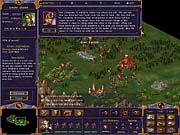
Real-time strategy games have never been all that demanding in terms of tactical thinking. The genre is typically about rapid mouse clicking and screen scrolling, not the astute planning and careful execution that are necessary starting points for military action in the real world. As such, it is more the domain of the twitch gamer than the virtual Clausewitz. Studying The Principles of War takes a backseat to getting good and hopped up on Jolt cola. There's nothing wrong with that, though die-hard strategy buffs are often left cold by games that require more forethought during the installation menu choices than they do during actual gameplay.
Which partially explains the warm reception given to Kohan: Immortal Sovereigns last March. Development house TimeGate Studios took a number of basic concepts from turn-based and real-time predecessors such as Warlords, Warlords: Battlecry, and Heroes of Might and Magic and blended them with a stripped-down resource system. The absence of micromanagement lent the design a vitality that was further enhanced with a combat system that emphasized making shrewd decisions in a timely manner. Small companies and different unit types afforded lots of strategic experimentation, while individual commanders and heroic immortals called Kohans lent a role-playing element. Despite being one of the most approachable strategy games in recent memory, Kohan gave players a lot to think about.
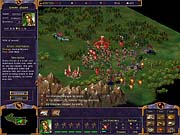
Fans will soon have even more to contemplate, thanks to Kohan: Ahriman's Gift. The first of a number of planned additions to the Kohan universe is being touted as a "stand-alone prequel" that includes some 30 to 40 hours of gameplay. A recent conversation with some of the design team members made it clear that the new title could easily have been called a full sequel. An impressive number of additions have been added to the crowd-pleasing mix from the first game, including three new campaigns and lots of other goodies.
"We are treating Ahriman's Gift as a follow-up to Kohan: Immortal Sovereigns, a volume two, if you will," commented producer Adel Chaveleh. "You'd be correct in saying that a ton has been added, both feature-wise and content-wise. With three yet-to-be-seen campaigns and dozens of unseen units, heroes, technologies, spells, and AI players, Ahriman's Gift will bring a smile to both experienced Kohan players and people experiencing the franchise for the first time."
We've recently been playing a partial build of the game that made it clear that Chaveleh wasn't engaging in typical gaming industry hyperbole. Judging from the single playable campaign that we finished, the final product is apt to be a worthy expansion of the original. Veteran players should be impressed with the design innovations, and newbies who missed out the first time through will likely find a game that balances accessibility with real strategic depth. Familiar reference points are everywhere, though there's enough new and reworked material to hold the interest of those who spent a great deal of time with Immortal Sovereigns.
An Epic Saga
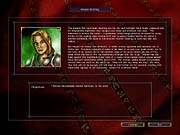
At the heart of Ahriman's Gift is a 12-mission campaign of the same name featuring the evil Ceyah, counterparts to the Kohan who were the primary villains of the original game. A prequel to the events of Immortal Sovereigns, the campaign follows Roxanna Javidan from her awakening through a quest to force the coming of a second Great Cataclysm. Such a devastating event will wipe out the noble Kohan and leave the rapacious Ceyah in control of the world of Khaldun. Veterans of the first game will notice that this turns the original campaign on its ear, with players fighting to cause the Cataclysm where before they were fighting to stop it. Instead of battling the dark god Ahriman and the forces of Shadow, this time you'll be waging war to promote his worship. Revenge is also chief on Roxana's mind, since she is the estranged wife of Kohan leader Darius Javidan, the key figure in Immortal Sovereigns.
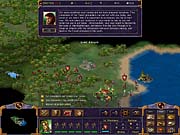
The scenarios in the Ceyah campaign are expected to be considerably longer than those in Immortal Sovereigns. Goals will be more elaborate, with each mission containing a number of tasks on the to-do list. These objectives will often change as the events proceed, further immersing you in the action and lending an epic air to the detailed storyline. All occurrences remain scripted, so expect a carefully written and planned saga instead of the off-the-cuff dynamic campaigns seen in other recent real-time strategy titles such as Emperor: Battle for Dune. There should be some room for choice in terms of mission progression, though, with different routes to the conclusion.
A number of new Ceyah units and spells have been developed for Ahriman's Gift. Many of the units have been specifically designed to fill designated roles in strategies that proved effective in Immortal Sovereigns. They should also provide players with further strategies to employ. The defiler support unit is an evil priest variant with the ability to strengthen allies and weaken foes through casting of the new poison cloud and unholy armor incantations. Judicious use of these units in combat can make a huge difference in the outcome of a battle. A more straightforward approach is provided by the Ceyah's new frontline soldier, the shadow knight. Designer Steve Hemmesch says that this unit has become "one of the current favorites around the office," for what seem to be some very good reasons.
"Shadow knights are warriors created by twisted rituals that include the possession of mortal warriors by shadow demons, resulting in a demonic warrior unlike any faced by the Kohan," Hemmesch said. "To top this off, they wield magical axes made of shadowsteel that cut through armor as if it doesn't exist. In game terms, this means that their attacks ignore all the defense bonuses of their targets."
New Ceyah heroes--in addition to Roxanna--will also factor into the game. Hemmesch and lead designer Ian Klimon won't reveal all the new characters, though they say that players will be glad to have the likes of Hasanko leading their companies. This undead wraith can cast the powerful new Ahriman's blessing spell, which vastly increases his combat abilities, in terms of both offense and defense.
Enter the Slaanri
Alongside the primary plotline are two smaller campaigns of six missions apiece. They fill in a few blanks in the Kohan mythology, tracing lesser figures and events. Both feature the Slaanri, more intelligent antecedents of the reptilian Slaan from Immortal Sovereigns. These creatures are the playable faction in one of the campaigns and a major ally of the Kohan forces in the other. They add an interesting new dimension to the game in that their strengths blur the lines between the Kohan and the Ceyah. For example, Slaanri mystics cast spells such as entangle, which hardly fits in with the murderous approach of Ceyah mages, while Slaanri warriors boast a poisonous spit that hardly meets with the approval of the virtuous Kohan.
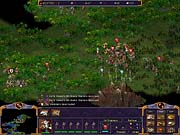
Slaanri companies seem to function best as support units backing up more powerful shock troops provided by other races. Combined armies of Kohan and Slaanri can form very effective teams, with the Slaanri poisoners and mages doing their best to weaken the opposition for their physically stronger allies. Judging from the playable missions in the preview build, this will add a further layer to the game's strategic concerns. As the Slaanri aren't overly powerful in shoulder-to-shoulder combat, you'll have to manage them carefully. They have hidden strengths, but these talents must be cultivated and astutely used to experience any battlefield success.
Hemmesch and Klimon prefer to let gamers find out more about the Slaanri campaign as they play. Still, Hemmesch let enough slip that it's probably safe to assume that the story focuses on how the civilized Slaanri devolved into the brutal Slaan of Immortal Sovereigns. At this earlier time, the Slaanri formed an "intelligent race naturally attuned to the flow of magic on Khaldun." As they were benevolent creatures "intricately tied with nature and the energy of creation," it's easy to presume that Ahriman and the Ceyah had something to do with their downfall.
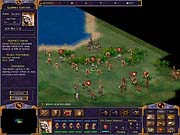
The "good" Kohan campaign, entitled The Quest for Darius, is also set before the events in Immortal Sovereigns. It tells the story of Ilyana Aswan, a female immortal who seeks the resting place of the hero Darius in order to quell nightmares of a coming apocalypse. The missions that constitute this campaign should be quite similar to those in Immortal Sovereigns, though considerably longer and more difficult. Those included in the preview build were quite engrossing, involving some highly challenging battles and an evolving tale of self-discovery and deception that ties into the Ceyah campaign. The scenarios provide a look behind the scenes of the events that shaped all that occurred in Immortal Sovereigns, and as such should be captivating for veterans of that game. Everything stands on its own, however, so those who didn't experience the first title don't have to worry about being left in the dark.
All three good factions are receiving some work as well. The Royalists, Nationalists, and Council have each been given new frontline and support units with access to additional spells. Among the frontline units are the Council's crossbowman, the Nationalists' disciple, and the Royalists' horse archer and lancer. Again, Hemmesch and Klimon didn't want to give everything away, but some information emerged about the Nationalists' disciple. Befitting the "judge first, ask questions later" mentality of the faction, the disciple adheres to fanatical religious beliefs and most often functions as a temple guard. They attack much like monks in Dungeons & Dragons, using martial arts to damage their foes with hands and feet. While relatively fearless, disciples lack the armor and defensive skills of other warriors, so as with the Slaanri above, players have to compensate for significant weaknesses.
Changes and Enhancements
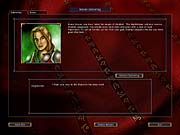
Disciples are led by Gavin Bahruum, a powerful warrior who founded the organization. He's just as fanatical as those who follow his orders, though as a hero, he of course has a little more muscle to back up his convictions. Although there are a number of new heroes in Ahriman's Gift, Klimon is keeping the details to himself for now, other than to say that players will have a "whole batch" of new leaders to become acquainted with.
Further general tweaks have been made to enhance the game's overall playability. Maps are more detailed and feature new monsters with which to contend. Giant wasps are the most noticeable new creatures, as they can be magically summoned with a new spell and have hives on nearly every map. Defensive play will be encouraged with the new ability to upgrade weak outposts into much more impressive fortresses. These structures are expected to contain twice the garrison strength of outposts and will of course be capable of withstanding more direct punishment as well. Strategic retreating will be a more viable option than ever.
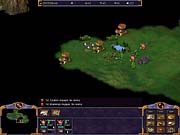
Skirmish-mode contests against the computer should be more lifelike than ever, due to the addition of at least five new maps and 29 new AI opponents. These personalized profiles are being designed to play certain factions very well, a fact that pops up as soon as a selection is made. So if a player wants a serious challenge from the Royalists, for example, he or she should be able to select an appropriate computer player from the roster of computer adversaries. AI opponents are also appropriately named in terms of the game mythos, with the likes of Arya Shahin and Jur'Mogruk replacing the inappropriate figures from Earth history (Cambyses, Xerxes, and so on) used in Immortal Sovereigns.
General Kohan AI has been improved across the board as well. Klimon is certain that experienced players "will notice the new and improved AI," as it is "smarter and tougher" than the earlier model. As a nice bonus for those who purchased Immortal Sovereigns but aren't convinced about the merits of Ahriman's Gift, TimeGate will be posting this enhanced AI to its Web site as part of a free downloadable "AI pack."
One potential flaw in Ahriman's Gift could be the absence of any real changes to the multiplayer game. Although Klimon and his team have worked hard on balance issues to ensure that the multiplayer experience is everything it should be, and that each faction has unique strong points, there are no obvious additions aside from the new maps mentioned above.
Whether it's called a stand-alone expansion pack or a full-blown sequel, Kohan: Ahriman's Gift seems to be rounding into shape as a worthy follow-up to Kohan: Immortal Sovereigns. The design team seems to have a handle on what people enjoyed about the first game, and it's providing more of the same without getting into a rut and simply repeating what went before. Strategic depth, already a hallmark of the original, can't help but be augmented by the numerous new units on display in the preview build. And the new playable races will add even further possibilities. Tactical thinkers can't help but be a little excited about this one.
Got a news tip or want to contact us directly? Email news@gamespot.com
Join the conversation